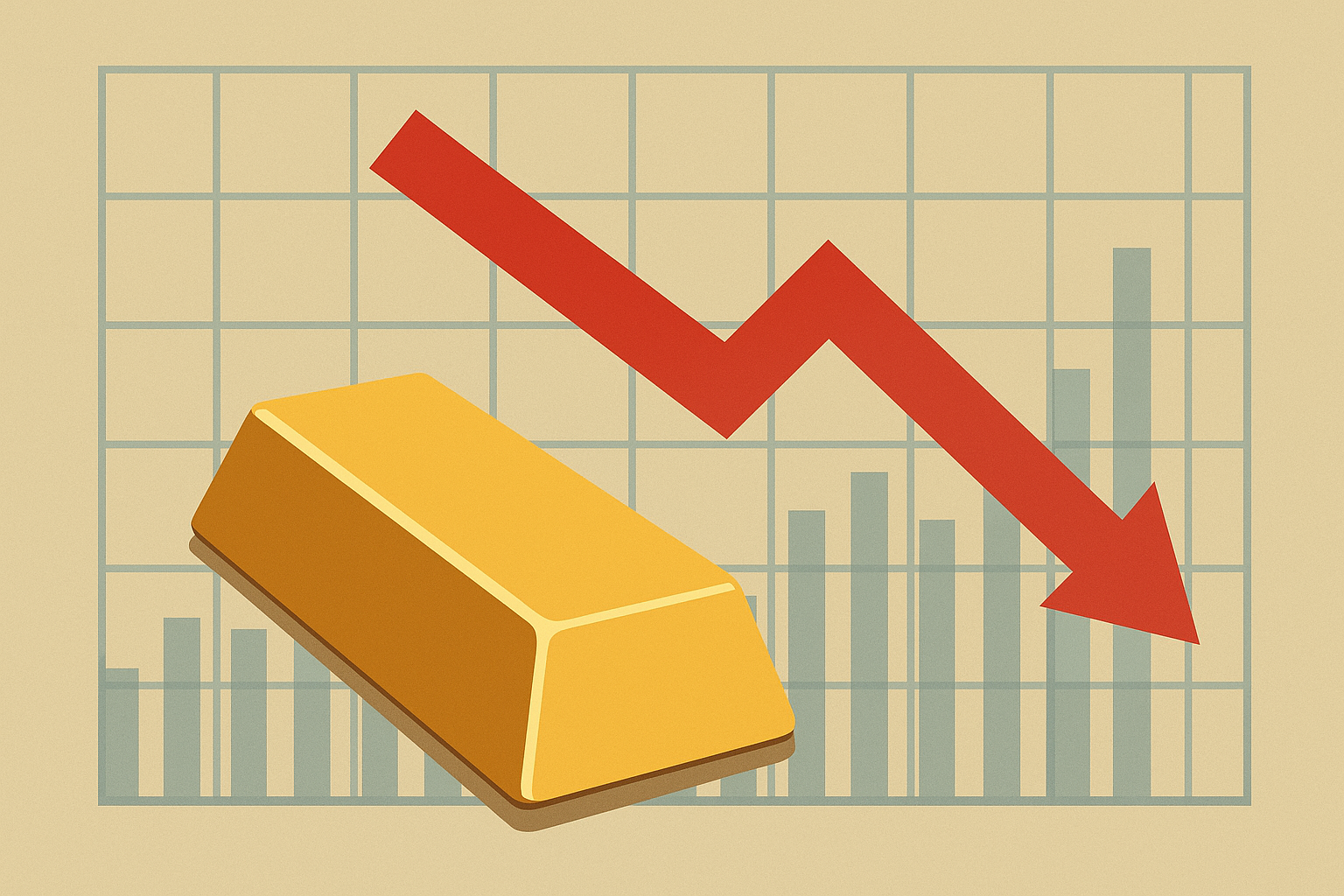After a months-long surge that pushed gold to record highs above $4,000 per ounce, the yellow metal lost some of its luster this week. On Thursday, gold futures fell over 2.5%, marking one of the steepest single-day declines of 2025, while leading gold miners like Newmont Corporation (NYSE: NEM) and Barrick Gold (TSX: ABX) slipped between 4–6%.
According to Morningstar, the move reflects “a broad wave of profit-taking after one of the strongest multi-quarter rallies in recent gold history.” The retreat has investors asking whether gold’s remarkable run has peaked—or if this dip presents a timely opportunity.
The Momentum Cools After a Record Run
Gold’s latest surge had been fueled by a combination of sticky inflation, a softening U.S. dollar, and mounting geopolitical uncertainty, factors that traditionally enhance the metal’s appeal as a safe-haven asset.
However, with the Federal Reserve maintaining higher-for-longer interest rate expectations and renewed optimism in equity markets, traders appeared eager to lock in profits. Data from the Commodity Futures Trading Commission (CFTC) shows that speculative net long positions in gold futures dropped by 8% this week—the sharpest decline since February.
Meanwhile, the VanEck Gold Miners ETF (GDX) shed nearly 5% on Thursday, highlighting the sector’s volatility as investors recalibrate risk exposure.
“This is less a fundamental correction and more a case of traders booking profits after an extraordinary rally,” said Caroline Bain, chief commodities economist at Capital Economics. “The underlying macro backdrop—especially real yields and fiscal deficits—still supports gold’s long-term case.”
Why This Matters for Investors
The gold pullback underscores the delicate balance between momentum and conviction in commodities markets. Historically, sharp corrections often occur near peaks in speculative positioning. Still, demand fundamentals remain robust: global central bank purchases of gold have stayed strong, and ETF inflows have picked up in Asia amid continued geopolitical risk.
According to World Gold Council data, central banks added over 200 tonnes of gold to reserves in Q3 2025, marking the 12th consecutive quarter of net purchases. China, Poland, and Turkey led the acquisitions, underscoring gold’s enduring role in sovereign diversification strategies.
For equity investors, the recent correction also exposed the divergence between physical gold and mining equities. While bullion prices remain up roughly 18% year-to-date, several major miners have lagged due to rising energy and labor costs and operational disruptions at key sites in Latin America and West Africa.
Future Trends to Watch
Analysts are divided on where gold goes next. Goldman Sachs recently trimmed its 12-month gold target from $4,200 to $3,850, citing a potential rebound in real yields if the U.S. economy avoids recession. Meanwhile, Bank of America maintained its bullish outlook, projecting that gold could test $4,500 by mid-2026 on the back of fiscal deterioration and dollar weakness.
Beyond spot prices, investors are also monitoring the structural transformation of gold mining companies, many of which are integrating AI-driven exploration technologies and renewable-powered operations to enhance margins and ESG compliance. Such modernization may help reduce cost volatility and improve investor sentiment in the long term.
“We’re entering a new era of capital discipline in mining,” said David Harquail, former CEO of Franco-Nevada. “Investors are rewarding companies that demonstrate operational resilience, low debt, and consistent dividends—even when prices fluctuate.”
Key Investment Insight
For investors with medium- to long-term horizons, this pullback may offer a strategic accumulation window rather than a signal to exit. Gold’s role as a portfolio hedge remains intact, especially against systemic risks like fiscal deficits, geopolitical escalation, or currency debasement.
However, due diligence is crucial. Evaluate miners with low all-in sustaining costs (AISC), diversified asset bases, and strong free cash flow generation. Companies like Agnico Eagle (TSX: AEM), Newmont, and Wheaton Precious Metals (TSX: WPM) have historically weathered gold corrections better than higher-cost peers.
For ETF investors, consider GDX or GLD for diversified exposure—but note that volatility remains elevated, with gold’s 30-day realized volatility rising to 15.8%, the highest since early 2024.
While Thursday’s sell-off may have rattled short-term traders, gold’s broader narrative as a hedge against policy uncertainty and global imbalances remains intact. Historically, pullbacks of this magnitude have often preceded renewed uptrends, particularly when macro conditions stay supportive.
As markets digest inflation data, central bank decisions, and geopolitical developments, investors should view volatility not as a deterrent—but as a signal to sharpen focus on fundamentals.
Stay tuned with MoneyNews.Today for continued analysis on global market trends, commodities, and the investment signals that matter most.





